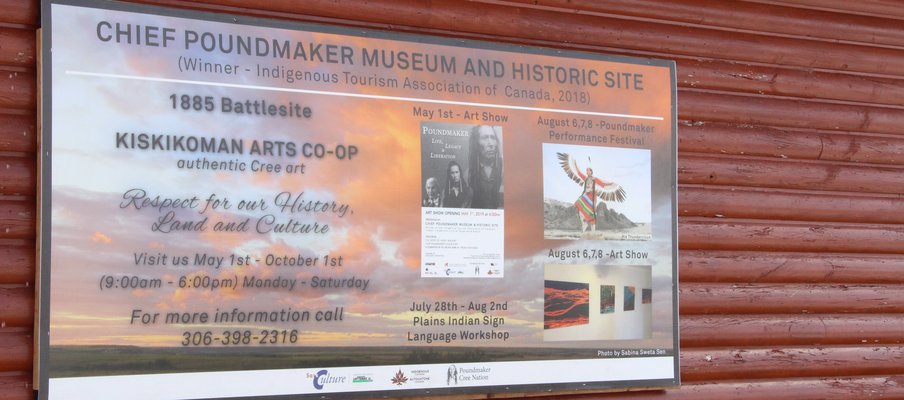
Chief Poundmaker Museum: Source of Pride and Heart of Community
For a museum that has gone through many major structural changes, the Chief Poundmaker Museum is a source of pride as it continues to pave ways across the country, and according to Floyd Favel, museum curator, “it (the museum) has retaken its place as the heart of the community.”
Among its many accomplishments, last year, the museum won the Indoor Indigenous Cultural Experience Award presented by the Indigenous Tourism Association of Canada. This year, the museum hosted a feast and an art show at the Poundmaker Cree Nation on May 1, 2019. The art show titled Poundmaker: Life, Legacy and Celebration drew hundreds of people from around the region and beyond to celebrate the life of Chief Poundmaker, the work of historian and actor Tyrone Tootoosis as well as the work of Henry Beaudry, a great grandson of Chief Poundmaker.
The museum was originally opened in 1996 and was closed temporarily in the year 2003 as it functioned as the band office, after the band office had burned. Upon re-opening, it was closed once again in 2012, and remained closed due to water and structural damage. The museum was revived again in 2017.
“The need to re-open the museum was due to the realization that history and culture were at the heart of our community and also that as Cree people, it is our history and culture that must be the centre from which stems governance, economic development, education and so on,” says Favel.
Since its re-opening, the museum has increased the engagement in the community, especially with Elders getting more involved and interested in sharing their knowledge of the Canadian history.
"In the past, the Elders felt their knowledge of oral history was not taken seriously or appreciated, but they have become more engaged in the ongoing correction of the Canadian history that we are making based on oral history," he says, adding that efforts are being made to bring history back to the present in order to strengthen the community’s present situation as Cree people living in a world dominated by colonialist world views.
Celeste Tootoosis, a descendant of Chief Poundmaker and traditional dancer, stresses Favel’s point. She says that the museum has given the young people an opportunity to learn about their history, identity and their ancestors such as Chief Poundmaker.
“The past can easily be forgotten but in our culture, we don’t forget about the past and the future, so when we celebrate, we eat with our ancestors,” she continues. “And we are all interested to share our culture with others and we hope that other people will come here to learn more about Chief Poundmaker.”
Chief Poundmaker was found guilty of treason after the Northwest Resistance in 1885 but is to be exonerated by the federal government from this wrongful conviction in 2019. He is widely known as a peacemaker.
The museum received funding from SaskCulture’s Museum Grant Program. According to Favel, the funding helped make repairs and renovations happen, and even more.
“Without SaskCulture funding, the initial impetus for our museum would not have happened,” he says, “At the beginning it felt like a Sisyphean task, almost impossible, but that little acknowledgement of the funding gave us a bit of inspiration and we were able to keep going.”

